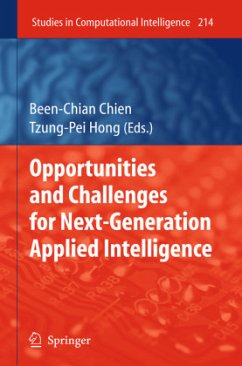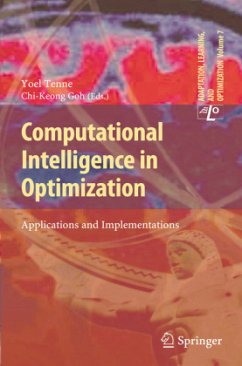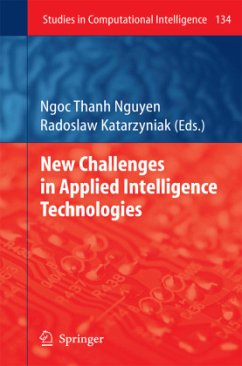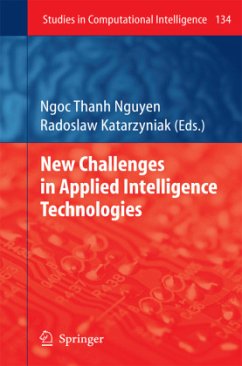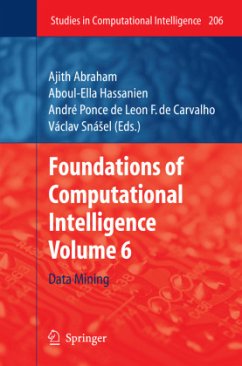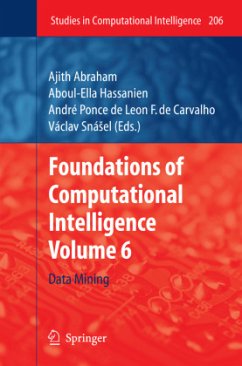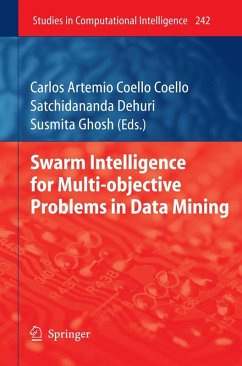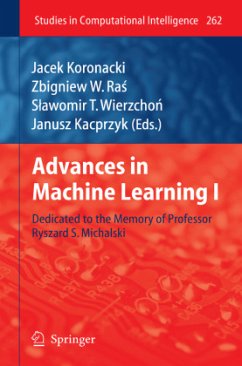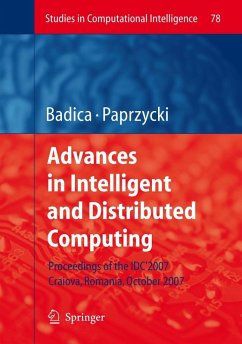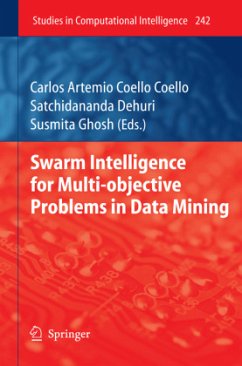
Opportunities and Challenges for Next-Generation Applied Intelligence
Versandkostenfrei!
Versandfertig in 6-10 Tagen
113,99 €
inkl. MwSt.

PAYBACK Punkte
57 °P sammeln!
The term "Artificial Intelligence" has been used since 1956 and has become a very popular research field. AI Techniques have been used in almost any domain. The term "Applied Intelligence" was created to represent its practicality. It emphasizes applications of applied intelligent systems to solve real-life problems in all areas including engineering, science, industry, automation, robotics, business, finance, medicine, biomedicine, bioinformatics, cyberspace, man-machine interactions, etc.
The International Conference on Industrial, Engineering & Other Applications of Applied Intelligent Systems (IEA-AIE) seeks for quality papers on applied intelligence that incorporate all kinds of real life problems. The objective of the conference was to bring together scientists, engineers and practitioners, who work on designing or developing applications that use intelligent techniques or work on intelligent techniques and apply them to application domains. The book is comprises of 12 parts including 52 chapters providing an up-to-date and state-of-the research on the applications of artificial Intelligence techniques.
The International Conference on Industrial, Engineering & Other Applications of Applied Intelligent Systems (IEA-AIE) seeks for quality papers on applied intelligence that incorporate all kinds of real life problems. The objective of the conference was to bring together scientists, engineers and practitioners, who work on designing or developing applications that use intelligent techniques or work on intelligent techniques and apply them to application domains. The book is comprises of 12 parts including 52 chapters providing an up-to-date and state-of-the research on the applications of artificial Intelligence techniques.
The term "Artificial Intelligence" has been used since 1956 and has become a very popular research field. Generally, it is the study of the computations that enable a system to perceive, reason and act. In the early days, it was expected to achieve the same intelligent behavior as a human, but found impossible at last. Its goal was thus revised to design and use of intelligent methods to make systems more ef- cient at solving problems. The term "Applied Intelligence" was thus created to represent its practicality. It emphasizes applications of applied intelligent systems to solve real-life problems in all areas including engineering, science, industry, automation, robotics, business, finance, medicine, bio-medicine, bio-informatics, cyberspace, and man-machine interactions. To endow the intelligent behavior of a system, many useful and interesting techniques have been developed. Some of them are even borrowed from the na- ral observation and biological phenomenon. Neural networksand evolutionary computation are two examples of them. Besides, some other heuristic approaches like data mining, adaptive control, intelligent manufacturing, autonomous agents, bio-informatics, reasoning, computer vision, decision support systems, expert s- tems, fuzzy logic, robots, intelligent interfaces, internet technology, planning and scheduling, are also commonly used in applied intelligence.




